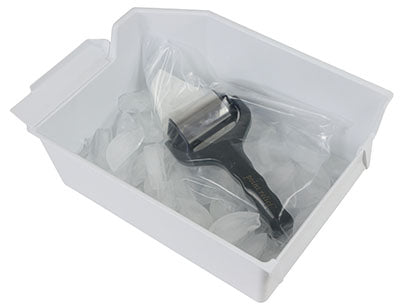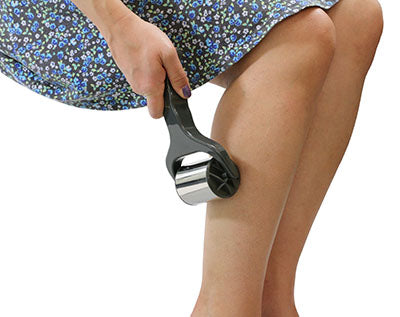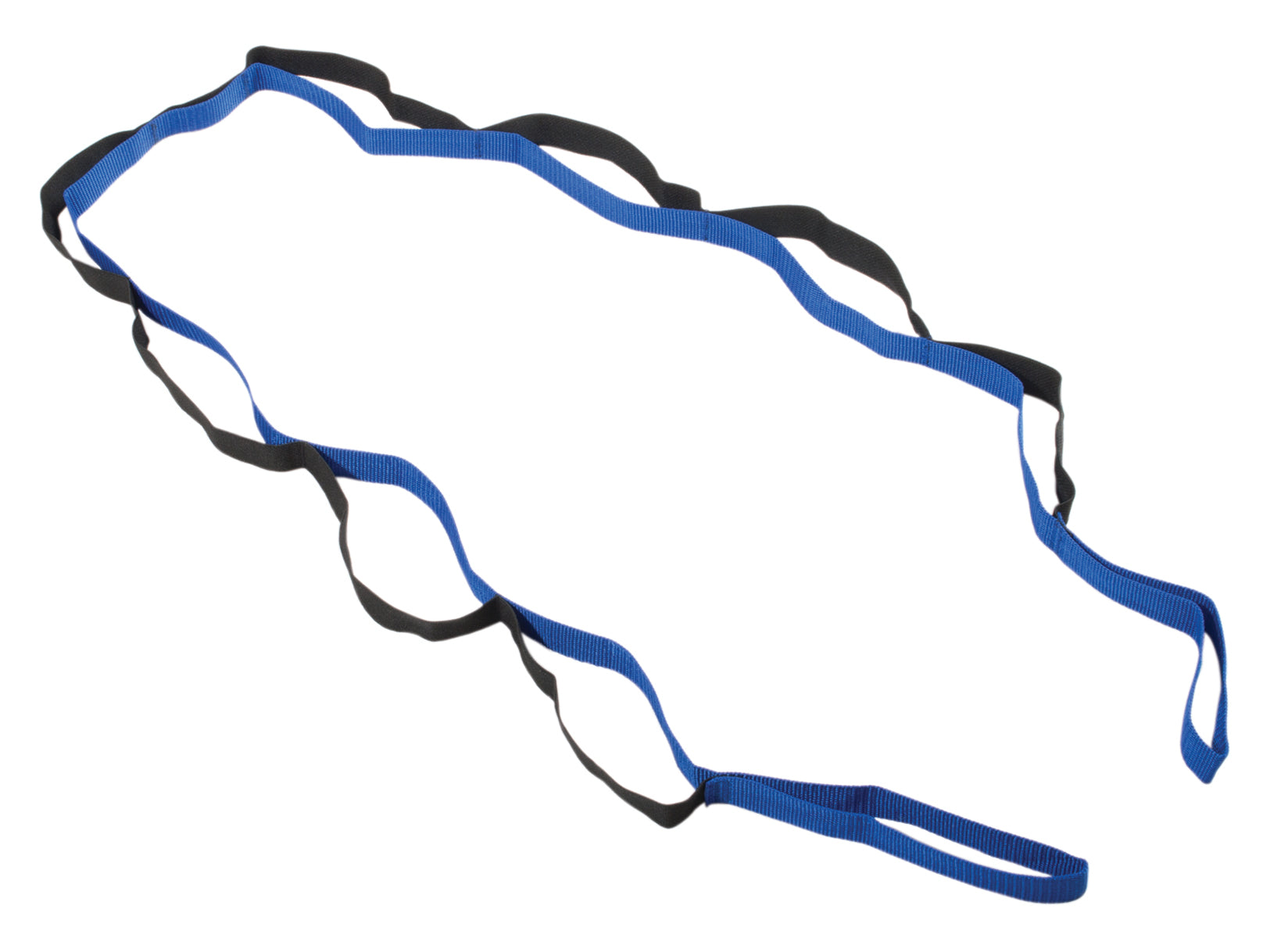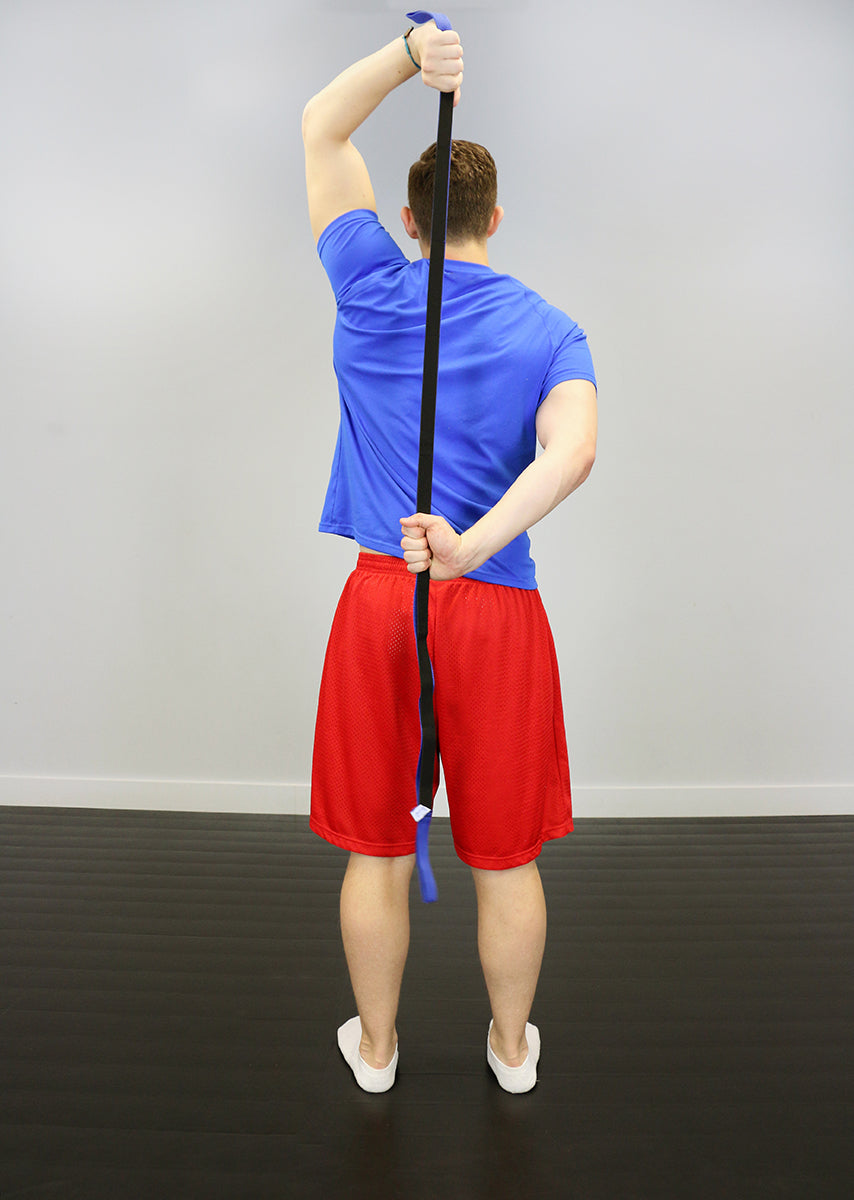Posture: The What
Posture is simply the position of your spine and limbs when standing or sitting. It is also aptly defined as "approach or attitude", given the two-way influence of posture on our psychology."A good stance and posture reflect a proper state of mind." — Morihei Ueshiba
From a side view, the spine follows an S curve. The S comprises the natural curvatures of the spine's subsections: cervical lordosis (extended/anteriorly convex shape), thoracic kyphosis (flexed/concave), lumbar lordosis, and sacral kyphosis:
Image courtesy of Balint Roxana © 123RF.com
Abnormal length-tension relationships between antagonistic muscles in the body will affect the resting position of that joint, and ultimately your resting spinal position. While they say curves are beautiful, there is no "perfect posture." Improving yours isn't necessarily about straightening the spine; these curves are crucial to its stability and function. Returning to neutral for you could be about regaining some of the natural curves, while in someone else it could be about reducing an excessive curve, like slouching or ape-bum. The predominant muscles contributing to posture and stability:
These muscles are generally designed to provide stability rather than powerful contraction, but they are capable of generating stiffness when challenged. People with chronic back pain exhibit funny activation patterns: aberrant or
delayed activation, or hypersensitization to pain, where stimuli to spinal positional receptors are interpreted by the CNS as pain, even in the absence of tissue damage. This neuropathic element is partly what can make chronic back pain so chronic. Guy Wires are designed to reinforce a pole or mast's stability. The spine is much the same. Antagonistic muscles pull on opposing sides of the spine to stabilize it, hence anything that loosens one guy wire and tightens the other, such as being asymmetrically weak, having big boobs, or walking around in anterior pelvic tilt, will destabilize the spine, wasting precious degenerative capacity and predisposing you to back pain.

Figure 5.4: Ultimate Back Pain and Performance (Stuard McGill)
The idea of the spine having a finite degenerative capacity comes from Dr. Stu McGill, who claims that our spines have a fixed number of flexion cycles available in their lifetime before herniating, so we shouldn't be wasting capacity on poor movement choices. He also posits that when we lift weights, we can end up functionally repurposing some of the deep lumbar erectors, which are postural, oxidative, and slow-twitch fibers, into fast-twitch, power-generating fibers. As a result, the muscles lose their endurance and spine-stabilizing role in favor of strength. They fatigue more easily during general activities, again wasting spinal capacity and predisposing us to injury. This is one reason why strength alone isn't actually protective against back pain.Control of Posture
Posture is subject to vestibular, emotional, visual, cortical, somatic, and mechanical control. Like breathing, its one of these funny body processes that can be either autonomic or voluntary, influenced by your balance, level of stress, mood, neurochemical state, muscular tightness, trigger points, threat perception, and even your self-belief. And that's just when standing at rest. Functional postures, sprinting/lifting stances, and posture under load are wrapped in another layer of complexity, but let's reserve that for coaching an athlete's technique. It's never simple with the body, is it? This "always flipping" happens, like last time I sat down and thought, "Hey,hunger would be a cool topic to write about. Surely can't be too complex, I could bash it out in an afternoon." Before you know it you're 20 feet down a physiology rabbit hole in a fetal position, surrounded by textbooks, singing about neuropeptides to yourself. I'm setting the scene here because the classical mechanisms don't always give us the full box of tools to play with. The holistic perspective tips the scales in our favor to make a change.
Posture: The Why
So now we're up to speed on what posture is and what modulates it (basically everything). Most of the factors below are a chicken-egg scenario (i.e. pain affects posture as much as posture affects pain, which is actually an advantage, considering slumped posture is associated with being tired, old, depressed, contracted and shallow breathing). The opposite is also true, so by changing your physical position, you open the possibility of being more youthful, happy, expansive and energetic with deeper breaths.Aesthetic
We often talk about not becoming that guy: the bore that goes out for a meal with friends and spends half the timetracking his macros and worrying about the accuracy of the menu, or talking about his deficit deadlifts rep scheme. Instead, we want you to be the enigma: the guy who is effortlessly in shape, where people can't reconcile the pizza slice in your hand with the visible biceps vein. And there's no quicker way to stamp "meathead" on your forehead than the bench-press-ape posture, or imaginary lats syndrome (ILS). Conversely, if you can restore the length-tension relationships between your chest and back, you'll have a tall and relaxed resting posture that displays your physique most symmetrically. Plus, there'll be no need to force it; better to have an effortless natural posture than to constantly fight against your tight pecs to puff your chest out. Ironically you'll actually look wider than Captain ILS.
Pain
The association between joint posture and pain/overuse injuries is more clear-cut forfeet, hips, and shoulders. Back pain, on the other hand, is a huge and messy topic and doesn't follow the same rules. I'll be covering it in more depth later this year. It used to be commonly believed that bad posture is the cause of back pain. The emerging picture is that posture is instead the effect. The body is adaptive. So much so that pain-free, high-level performance is possible even in spite of clinically abnormal postures. Saying that, we're not invincible, and we would be prudent not to take the piss with our spines. Assuming our spines can only handle a certain amount of wear and tear in our lives, we would be best served saving it for lifting.
Unloaded Postures: Sitting, Standing
- When sitting, change in posture is more important than a sitting in a specific way. Vary your position from time.
- “The ideal sitting posture is a variable one.” - McGill
- Prolonged sitting/standing with the spine in end-range flexion or extension probably isn't the best idea.
- "Sitting is the new smoking" is mostly scaremongering from a posture/pain perspective. Listen to
Greg Lehman discuss this claim here.
Loaded Postures: Lifting
- Similarly, we do not want to load the spine at end range flexion or extension. Stick to lumbar neutral for any heavy loading.
- Maintain intra-abdominal pressure in all directions when lifting. To get a feel for this, try wearing a belt, "breathing into your obliques", and pushing out against it in 360 degrees. Many make the mistake of just pushing their belly out to the front. Never vacuum your abs under load! Your colon doesn't do such a good job of stabilizing your spine.
- Mechanically, you can deadlift more weight with a rounded back, and there's even
some argument to doing so, but this requires an immense level of technical proficiency and spinal proprioception. - On balance, this is not recommended, and best reserved as a choice for the competitive lifter to weigh up. The majority of your deadlifting should be done in a textbook neutral posture.
- More importantly, the spine must not move under load. The highest risk of disc herniation is where the spinal position buckles during a max deadlift, for example.
- Finally, since posture is tied in with flexibility: Say you lack range of motion in your shoulders in a squat. This will manifest by compensation the next joint down, and the next, all the way down the kinetic chain, and alter your lifting mechanics. And usually not in a good way. Your posture is then directly limiting your ability to lift with correct technique, possibly putting you at risk of injury.
Listen here. The major mistake, especially when squatting, is to overextend the lumbar spine, ass out. To correct for this without trying to float your pelvis about and guess lumbar neutral, simply squeeze your glutes when standing at lockout.

Left: Posterior Pelvic Tilt, Lumbar Flexion / Right: Anterior Pelvic Tilt, Lumbar Extension
Neutral spine? But Yusef, I spied you doingJefferson curls the other week. You got me. Jefferson curls are a little controversial, but they're not done as a heavy-loading movement and are more to re-establish spinal proprioception and "lubricate" the vertebrae to articulate more smoothly. I've been using this as a rehab movement to stop the whole lumbar section from wanting to move in one clumsy block.
Hormones?
You may have seen thatTED Talk about how "power poses" boost your testosterone to cortisol ratio, and the effects of posture on hormonal markers of confidence. Unfortunately, the study was
replicated and failed to reach
statistical significance. However, just because we aren't able to find a significant physiological marker doesn't mean the whole thing is bunk. Remember, the goal isn't to change our hormones for the sake of changing our hormones. The point of measuring these markers is to find a proxy for how posture makes us feel. So let's go straight to the horse’s mouth and look at measures of mood.
Mood
Testosterone to cortisol ratios aside,this is pretty cool: "The researchers found that how the students rated themselves depended on the posture they kept when they wrote the positive or negative traits. Those who were in the upright position believed in the positive and negative traits they wrote down while those in the slouched over position weren’t convinced of their positive or negative traits. They trusted their own thoughts whether those thoughts were positive or negative. On the other hand, when the students sat in a powerless position, they didn’t trust anything they wrote down whether it was positive or negative. However, those in the upright position likely had an easier time thinking of “empowering, positive” traits about themselves to write down while those in the slouched over position probably had an easier time recalling “hopeless, helpless, powerless, and negative” feelings,
according to Erik Peper, professor of psychology at San Francisco State University. In a series of experiments, Peper found that sitting in a collapsed, helpless position makes it easier for negative thoughts and memories to appear while sitting in an upright, powerful position makes it easier to have empowering thoughts and memories." It appears that posture impacts our readiness to think and accept negative thoughts. It's a two-way relationship.
Emotional stimuli can impact our posture and vice versa. "Adopting an upright seated posture in the face of stress can maintain self-esteem, reduce negative mood, and increase positive mood compared to a slumped posture. Sitting upright may be a simple behavioral strategy to reduce stress." —
Nair and Sagar. The
same effect seems to exist in those with depressive symptoms.
Breathing
As expected,slumped sitting restricts your ability to breathe deeply. I've presented a module on breathing in our VIP client group — another one of those "surely can't be too complicated" topics. For brevity, remember we have parasympathetic stretch receptors in the base of the lungs; so deep belly breathing directly increases vagal tone, reducing heart rate and stress. Shallow chest breathing does the opposite and puts you in a low-level state of stress. Adopting a default posture that lends itself to deep breathing, therefore, reduces that friction of having to constantly remind yourself.
Performance
Your spine is the axis of force-transfer between your appendicular structures (except your willy). The best athletes are the ones that can coordinate movement explosively about their spines. As a lifter, and likely someone that sits at a desk a lot, the odds are you spend a lot of time slouching, with tight hip flexors, pecs and biceps, fueling the fire of kyphosis, lordosis, and medial humeral rotation. Don't we all know that feeling? The spine and intervertebral discs are also structurally more stable in the neutral range, as opposed to end-range. By regaining balance and control of your spine and restoring those length-tension relationships, we open more capacity for sporting performance. You can then express that strength you've worked hard to build through more efficient coordinated movements. By this point you're hopefully convinced of the benefits of improving your posture:- Pain and injury
- Performance
- Mood
- Others' perception of you
- Your perception of yourself
- Readiness to believe your thoughts
Header Image courtesy of guniita © 123RF.com
Yusef Smith is a competitive gymnast, powerlifter, medic and one of the coaches at
PropaneFitness. Jonny and Yusef have helped thousands of clients to get leaner, stronger and happier with their physiques by prescribing simple rules that produce dramatic results.





































































